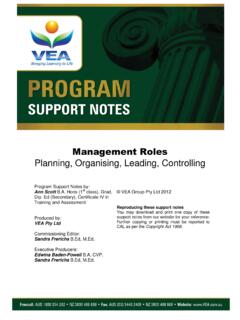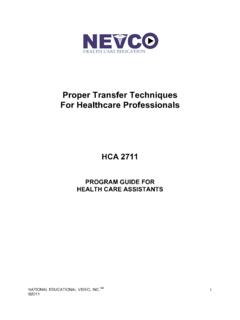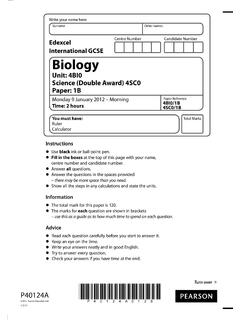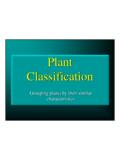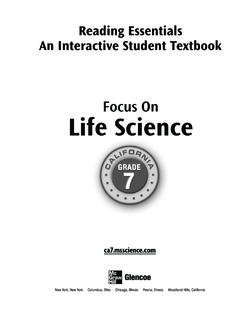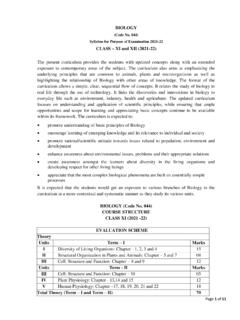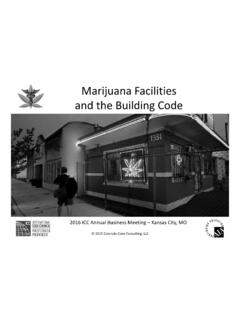Transcription of Sexual and Asexual Reproduction - Infobase
1 Program Support Notes by: Janine Haeusler M. Sc (Ed), B. Ed Produced by: VEA Pty Ltd Commissioning Editor: Sandra Frerichs , Executive Producers: Edwina Baden-Powell , CVP. Sandra Frerichs , Video Education Australasia Pty Ltd 2012 Reproducing these support notes You may download and print one copy of these support notes from our website for your reference. Further copying or printing must be reported to CAL as per the Copyright Act 1968. Sexual and Asexual Reproduction Sexual and Asexual Reproduction 2 Video Education Australasia Pty Ltd 2012 Reproducing these support notes You may download and print one copy of these support notes from our website for your reference. Further copying or printing must be reported to CAL as per the Copyright Act 1968. For Teachers Introduction While bacteria live for 15 80 minutes, some animals for half a century and some plants for hundreds or thousands of years, organisms do not live forever.
2 Without a mechanism for Reproduction life would come to an end. This program explores Reproduction , one of the most important and fundamental properties of living organisms. A variety of different methods of Asexual Reproduction are examined including the simple method by which single celled organisms divide and produce two identical copies of themselves. Students will learn that flowering plants and most animals reproduce sexually, often using complex strategies that have evolved over millions of years. The advantages and disadvantages of Sexual and Asexual Reproduction and the reasons why both reproductive strategies still persist today are also explored. Timeline 00:00:00 Reproduction 00:02:24 Types of Asexual Reproduction 00:06:12 Sexual Reproduction in animals 00:10:10 Sexual Reproduction in flowering plants 00:12:33 Asexual and Sexual Reproduction - advantages and disadvantages 00:14:40 Summaries: Asexual Reproduction 00:14:55 Summaries: Sexual Reproduction 00:15:10 Credits 00:16:11 End program Related Titles Transportation Systems in Plants Transportation Systems in Animals Designer Genes - The Science and the Ethics Multicellular Organisms and Their Nervous Systems Mutations - Changing the Code Recommended Resources Sexual and Asexual Reproduction 3 Video Education Australasia Pty Ltd 2012 Reproducing these support notes You may download and print one copy of these support notes from our website for your reference.
3 Further copying or printing must be reported to CAL as per the Copyright Act 1968. Student Worksheet Initiate Prior Learning 1. Brainstorm the following as a class a) Why do organisms reproduce? b) What is the result of Reproduction ? c) What would happen to a species if every individual from that species suddenly lost the ability to reproduce? 2. Complete a semantic mapping task. Draw a map on a sheet of paper like the example below and list down as many dot points as you can which relate to the following headings. 3. Answer the following question individually. a) How much of your parents make up your genetic code? _____ b) How much from each parent? _____ c) How is this different from organisms such as bacteria and protozoa? _____ _____ Reproduction One parent Two parents Plants Animals Bacteria, Fungi Sexual and Asexual Reproduction 4 Video Education Australasia Pty Ltd 2012 Reproducing these support notes You may download and print one copy of these support notes from our website for your reference.
4 Further copying or printing must be reported to CAL as per the Copyright Act 1968. Active Viewing Guide Reproduction 1. Use the table below to distinguish between Sexual and Asexual Reproduction . (3 lines per row except heading) Asexual Sexual Number of parents Genetic makeup of offspring Examples of organisms for each method 2. Define: a) gamete _____ _____ _____ b) fertilization _____ _____ _____ Types of Asexual Reproduction 3. Explain how simple single celled prokaryotic organisms reproduce? _____ _____ _____ Sexual and Asexual Reproduction 5 Video Education Australasia Pty Ltd 2012 Reproducing these support notes You may download and print one copy of these support notes from our website for your reference. Further copying or printing must be reported to CAL as per the Copyright Act 1968. 4. How does cell structure differ in prokaryotic and eukaryotic organisms? _____ _____ _____ 5.
5 Asexual Reproduction involves what kind of nuclear division? _____ 6. How do eukaryotic organisms which reproduce asexually ensure that the number of chromosomes is kept constant from one generation to the next? _____ _____ _____ 7. What is the difference between: a) budding and fission _____ _____ _____ b) fragmentation and fission _____ _____ _____ c) seeds and spores _____ _____ _____ Sexual and Asexual Reproduction 6 Video Education Australasia Pty Ltd 2012 Reproducing these support notes You may download and print one copy of these support notes from our website for your reference. Further copying or printing must be reported to CAL as per the Copyright Act 1968. Sexual Reproduction in animals 8. What type of cell division produces gametes? _____ 9. Why must gametes only contain half the amount of genetic information of the parent? _____ _____ _____ 10. What is indirect development?
6 Name an animal which develops indirectly. _____ _____ _____ 11. Why do you think external fertilization occurs generally in aquatic animals not terrestrial animals? _____ _____ _____ Sexual Reproduction flowering plants 12. Where are the female and male gametes in a flowering plant? _____ _____ 13. What is the advantage of cross pollination? _____ _____ Sexual and Asexual Reproduction 7 Video Education Australasia Pty Ltd 2012 Reproducing these support notes You may download and print one copy of these support notes from our website for your reference. Further copying or printing must be reported to CAL as per the Copyright Act 1968. 14. Give an example of a plant: a) that contains both male and female organs and gametes _____ b) contains only one type (male or female) of reproductive organ _____ Asexual and Sexual Reproduction advantages and disadvantages 15. Explain why organisms that live in a stable environment often use Asexual Reproduction .
7 _____ _____ _____ 16. Why is a species that reproduces sexually more likely to survive a sudden change in environment than a species which reproduces asexually? _____ _____ _____ Sexual and Asexual Reproduction 8 Video Education Australasia Pty Ltd 2012 Reproducing these support notes You may download and print one copy of these support notes from our website for your reference. Further copying or printing must be reported to CAL as per the Copyright Act 1968. Extension Activities 1. Review your semantic map which you completed before viewing the program. Add more ideas using a different colored pen. 2. Describe the differences between Sexual and Asexual Reproduction in terms of the genetic makeup of the offspring. _____ _____ _____ 3. If bacteria are able to reproduce every 15 minutes, calculate how many bacteria are produced from a single bacterium cell after 6 hours? Does this number surprise you?
8 _____ _____ _____ 4. On a separate sheet of paper, find a large flower and cut it in half lengthwise. Draw and label the various parts of the male and female reproductive systems. 5. What are the horticultural advantages of producing plants by cuttings rather than from seeds? Can you think of any disadvantages? _____ _____ _____ 6. Research the different methods used to propagate different plant species in nurseries. Prepare a short report on three different methods. 7. Attempt to propagate 2 different plants which use different propagation methods. Was one method more successful than the other? Suggests reasons for any differences or similarities. 8. Assisted reproductive technology (ART) has made it possible for many women and men who could not have children naturally to reproduce. Investigate one of the following methods of assisted Reproduction . a) IVF b) GIFT c) ICSI d) Donor or Partner Insemination e) FET Produce a poster that explains the ART to your class.
9 Sexual and Asexual Reproduction 9 Video Education Australasia Pty Ltd 2012 Reproducing these support notes You may download and print one copy of these support notes from our website for your reference. Further copying or printing must be reported to CAL as per the Copyright Act 1968. Suggested Student Responses Initiate Prior Learning 1. Brainstorm the following as a class a) Why do organisms reproduce? Answers will vary but may include: to ensure survival of the species. b) What is the result of Reproduction ? Answers will vary but may include offspring which can be identical or non-identical to the parent, depending on the Reproduction method used by a species. c) What would happen to a species if every individual from that species suddenly lost the ability to reproduce? The likely result is extinction of a species. 2. Complete a semantic mapping task. Draw a map on a sheet of paper like the example below and list down as many dot points as you can which relate to the following headings.
10 3. Answer the following question individually. a) How much of your parents make up your genetic code? 100% b) How much from each parent? 50% or half from each parent. c) How is this different from organisms such as bacteria and protozoa? Bacteria and protozoa are identical to parent (only one parent) so genetic code all (or 100%) from single parent. Reproduction One parent Answers will vary. Two parents Answers will vary. Plants Answers will vary. Animals Answers will vary. Bacteria, Fungi Answers will vary. Sexual and Asexual Reproduction 10 Video Education Australasia Pty Ltd 2012 Reproducing these support notes You may download and print one copy of these support notes from our website for your reference. Further copying or printing must be reported to CAL as per the Copyright Act 1968. Active Viewing Guide Reproduction 1. Use the table below to distinguish between Sexual and Asexual Reproduction .



